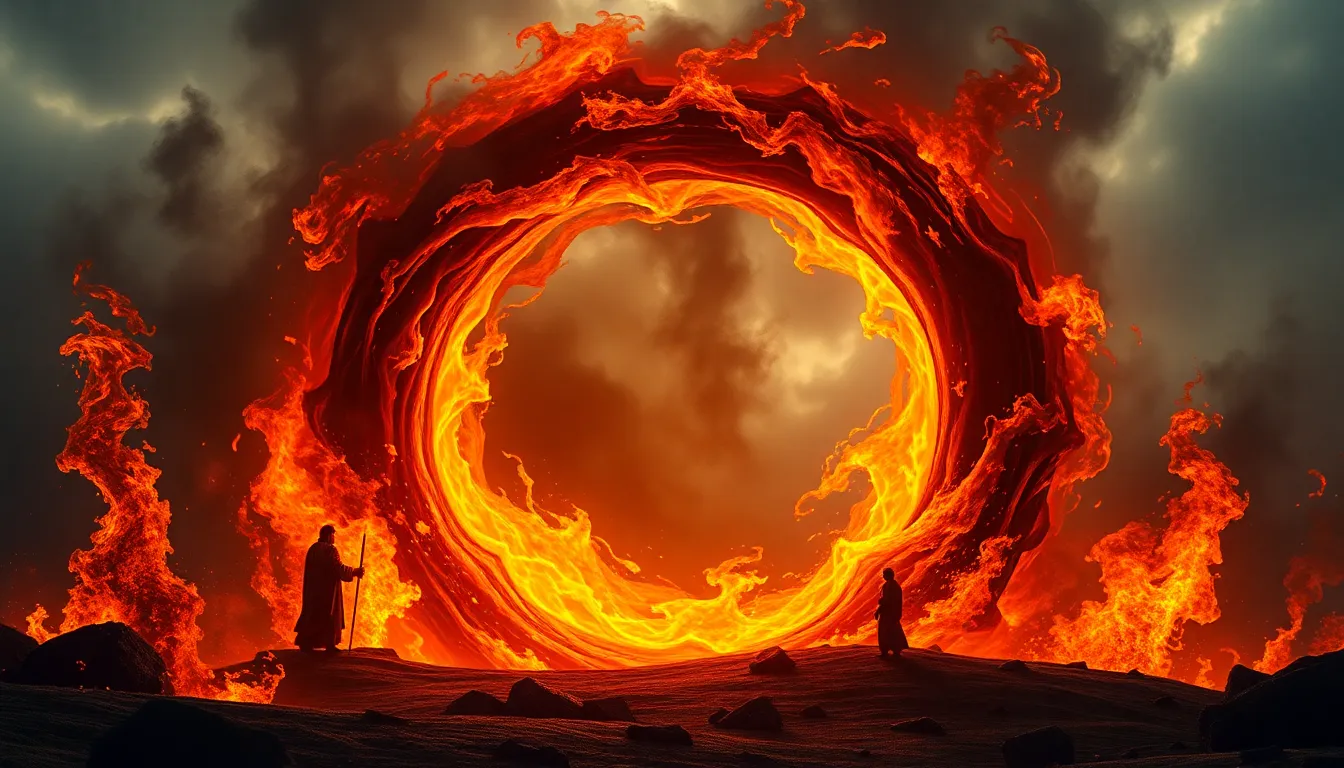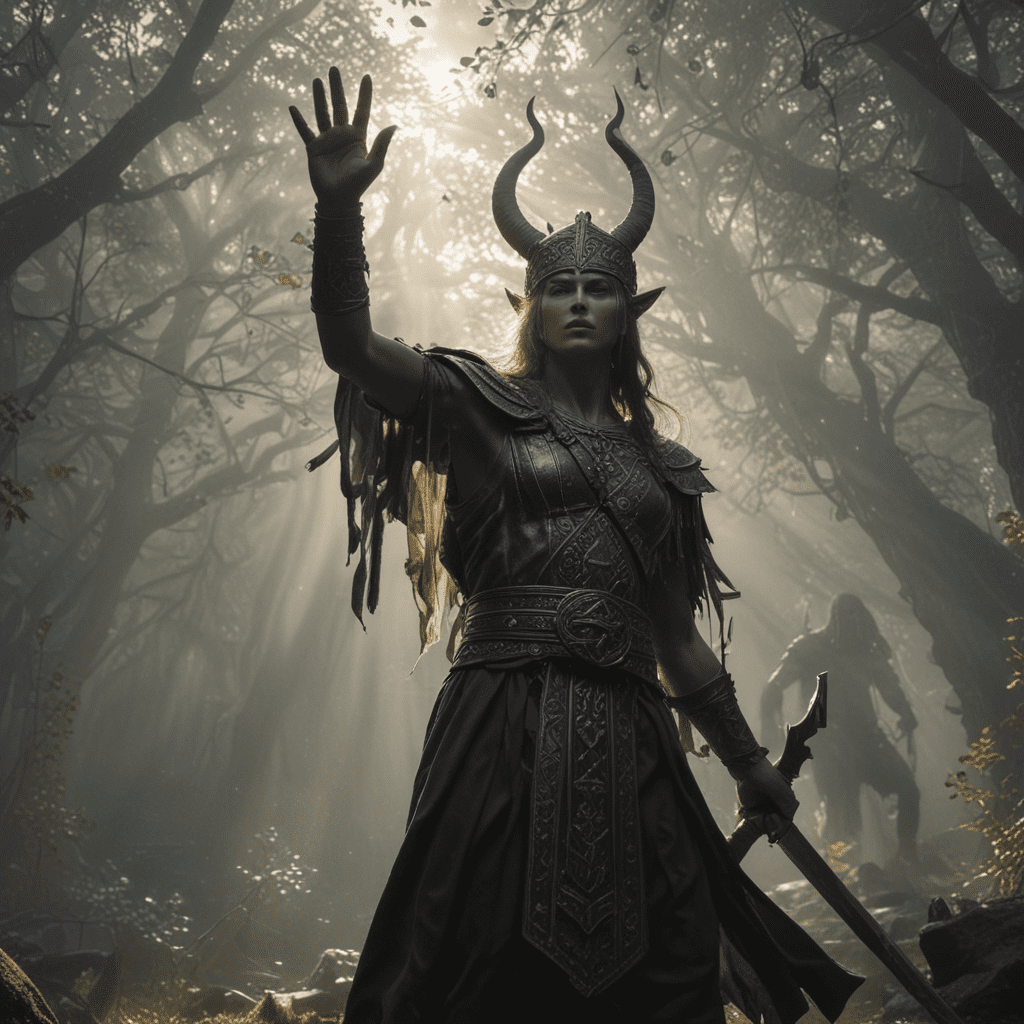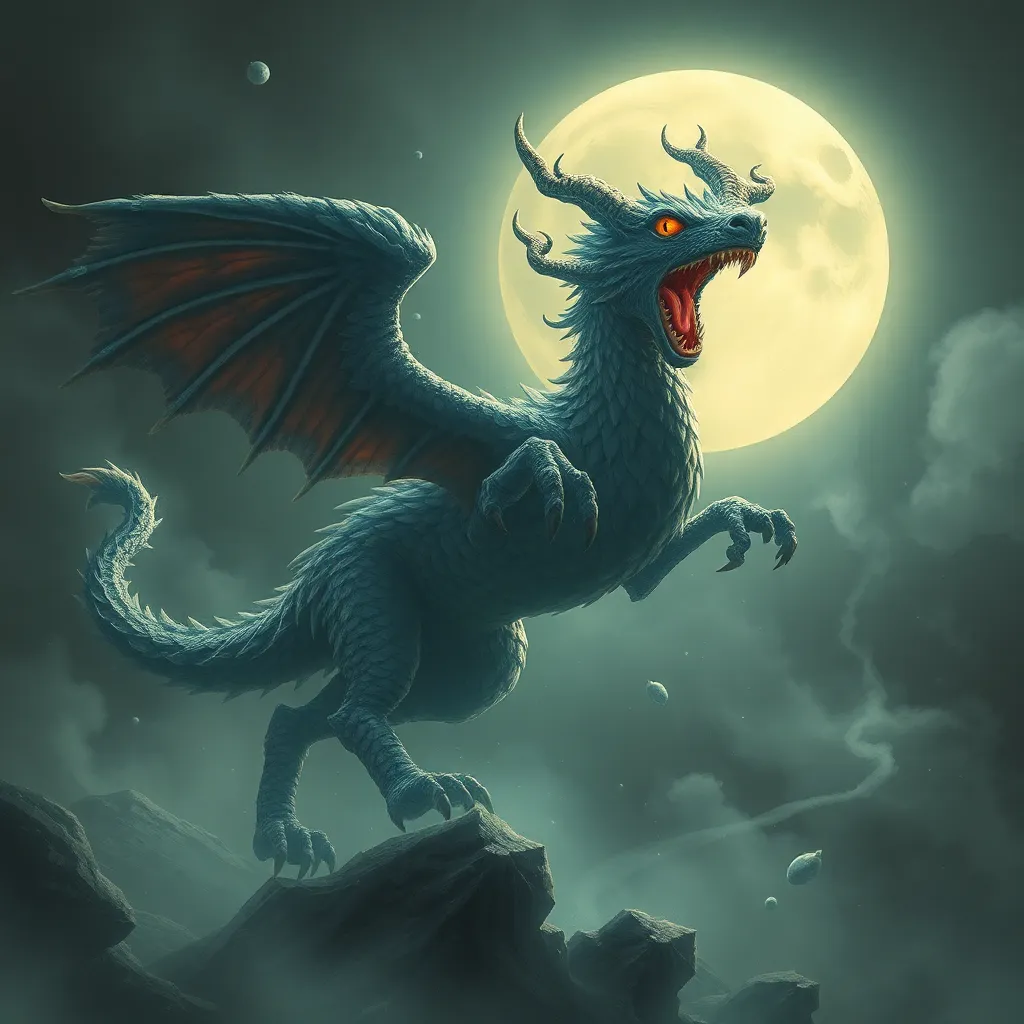The Ring of Fire: Myths of Transformation and Power
I. Introduction
The Ring of Fire is a horseshoe-shaped zone of high seismic and volcanic activity that encircles the Pacific Ocean. Spanning approximately 25,000 miles, it includes countries such as the United States, Canada, Japan, Indonesia, and New Zealand, making it one of the most geologically active regions on the planet.
This region is not only significant for its geological features but also holds immense cultural and mythological importance. Various civilizations that have inhabited or been influenced by this area have woven intricate narratives around volcanic activity and the natural phenomena associated with it. This article aims to explore the myths surrounding transformation and power within the context of the Ring of Fire.
II. Understanding the Ring of Fire
A. Geological characteristics and volcanic activity
The Ring of Fire is characterized by frequent earthquakes and numerous active volcanoes. It is home to about 75% of the world’s volcanoes and is a direct result of tectonic plate interactions. This interaction leads to subduction zones, where one tectonic plate slides beneath another, resulting in volcanic activity and seismic events.
B. Countries and cultures affected by the Ring of Fire
The Ring of Fire impacts numerous countries and regions, including:
- United States (West Coast, Alaska)
- Canada (British Columbia)
- Mexico
- Japan
- Indonesia
- Philippines
- New Zealand
These regions are home to diverse cultures that have developed unique myths and legends in response to the natural forces surrounding them.
C. Historical significance of the Ring of Fire in shaping landscapes and civilizations
The volcanic eruptions and tectonic activity in the Ring of Fire have significantly shaped the landscapes and civilizations throughout history. The fertile soils resulting from volcanic ash have supported agriculture, while the natural barriers created by mountains have influenced migration patterns and trade routes.
III. Cultural Myths and Legends Associated with the Ring of Fire
A. Indigenous narratives and folklore
1. Native American myths
Many Native American tribes have rich myths associated with volcanic activity. For example, the Klamath Tribe in Oregon has a legend about Mount Mazama, which erupted and formed Crater Lake. This eruption is often viewed as a transformative event that reshaped their cosmology.
2. Pacific Islander stories
In the Pacific Islands, volcanic eruptions are frequently depicted as manifestations of divine wrath or transformation. Stories of the goddess Pele in Hawaiian mythology illustrate how volcanic eruptions are seen as both destructive and creative forces, leading to the formation of new lands.
B. Transformation myths related to volcanic eruptions
Volcanoes are often seen as symbols of transformation. The destructive power of eruptions leads to the creation of new landscapes and ecosystems, which is reflected in various myths that highlight rebirth and renewal.
C. Symbolism of fire in various cultures
Fire symbolizes both danger and transformation across cultures. It represents the duality of destruction and creation, often seen as a catalyst for change, whether in personal lives or societal structures.
IV. The Ring of Fire in Modern Literature and Art
A. Representation in literature
1. Fiction and poetry inspired by the Ring of Fire
Many authors have drawn inspiration from the Ring of Fire in their works. The themes of destruction and rebirth are prevalent, often reflecting the complex relationship humans have with nature.
2. Notable authors and their works
Notable authors like Jack London and James Michener have written about the landscapes and cultures shaped by the Ring of Fire, weaving narratives that explore both the beauty and terror of volcanic activity.
B. Influence on visual arts
1. Paintings and sculptures inspired by volcanic landscapes
Artists have long been captivated by the dramatic landscapes created by volcanic activity. Painters like Albert Bierstadt captured the awe-inspiring beauty of these regions, while contemporary artists explore themes of destruction and renewal in their works.
2. Contemporary artists exploring the theme of transformation
Many modern artists use volcanic landscapes as metaphors for personal and societal transformation, exploring how destruction can lead to new beginnings.
V. The Psychological Dimension of Fire and Transformation
A. The symbolism of fire in psychology
In psychology, fire often symbolizes passion, energy, and transformation. It can represent the drive for change and the emotional turmoil that often accompanies significant life transitions.
B. The concept of transformation through destruction
The idea that destruction can lead to transformation is prevalent in both psychological theory and cultural narratives. This concept can be seen in the aftermath of volcanic eruptions, where the landscape, while devastated, can eventually give rise to new life.
C. Case studies of individuals or communities experiencing change through natural disasters
Communities affected by natural disasters often undergo significant psychological transformations. Case studies highlight the resilience and adaptability of individuals as they rebuild their lives in the wake of destruction.
VI. Mythical Creatures and Deities of the Ring of Fire
A. Exploration of mythical beings associated with volcanic regions
Various cultures have mythical creatures associated with volcanoes, often seen as guardians or harbingers of eruptions. These beings embody the power and unpredictability of nature.
B. The role of deities in local cultures
Deities like Pele in Hawaiian mythology play crucial roles in understanding volcanic activity, representing both the creative and destructive aspects of fire.
C. Parallels between mythical narratives and geological events
The stories surrounding these deities often parallel real geological events, reflecting the deep connection between cultural narratives and natural phenomena.
VII. The Impact of the Ring of Fire on Human Populations
A. Historical eruptions and their transformative effects on societies
Throughout history, significant eruptions have reshaped societies. The eruption of Mount Vesuvius in 79 AD, for example, had lasting effects on Roman culture and architecture.
B. Modern implications for communities living in the Ring of Fire
Today, communities within the Ring of Fire must navigate the challenges posed by living in such a volatile region, balancing development with disaster preparedness.
C. Adaptation and resilience of cultures within this region
Many cultures have developed unique strategies to adapt to the risks associated with living near active volcanoes, showcasing human resilience in the face of natural dangers.
VIII. Environmental and Ecological Transformations
A. The role of volcanic activity in shaping ecosystems
Volcanic eruptions play a crucial role in shaping local ecosystems, creating new habitats and influencing biodiversity.
B. Case studies of biodiversity in the Ring of Fire
Several studies have documented the rich biodiversity that emerges in volcanic regions, highlighting the relationship between geological activity and ecological diversity.
C. Conservation efforts and ecological myths
Conservation efforts in volcanic regions often draw on local myths, emphasizing the importance of protecting these unique ecosystems that have been shaped by both nature and culture.
IX. Scientific Perspectives on Myths and Reality
A. The intersection of geology and mythology
The interplay between scientific understanding of geological processes and cultural myths provides insight into how societies interpret natural phenomena.
B. How scientific understanding of the Ring of Fire informs cultural beliefs
As scientific knowledge of the Ring of Fire expands, it often challenges or reinterprets traditional myths, leading to a dynamic relationship between science and culture.
C. Debunking myths: what science reveals
Science plays a critical role in debunking myths surrounding volcanic activity, offering explanations grounded in geological evidence while respecting the cultural narratives that have emerged over centuries.



